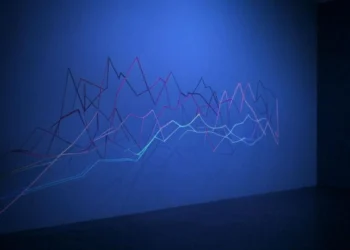Table of Contents
The Relative Strength Index (RSI) is one of the most widely used technical indicators, helping traders and investors predict the future direction of an asset’s price. This indicator was developed by J. Welles Wilder in 1978 and has become a key tool for analyzing stock markets, cryptocurrencies, commodities, and forex.
RSI measures the speed and magnitude of price changes on a scale from 0 to 100, helping to identify overbought and oversold market conditions. If RSI rises above 70, the asset is likely overbought, which could indicate a potential price decline. Conversely, an RSI below 30 signals oversold conditions, suggesting a possible price rebound.
1. RSI as an Indicator of Overbought and Oversold Markets
One of the primary functions of RSI is to identify moments when an asset is overbought or oversold.
-
Overbought Market (RSI Above 70)
When RSI exceeds the 70 level, it means the asset’s price has risen too quickly, potentially leading to a correction or reversal. A high RSI usually indicates that investors are buying aggressively, but also that the asset may be overvalued. -
Oversold Market (RSI Below 30)
Conversely, when RSI falls below 30, it suggests the price has dropped sharply, making the asset undervalued. This can be a buying signal, as the asset may recover and start to rise.
RSI helps traders time their market entries and exits and avoid impulsive trading decisions.
2. RSI and Trend Analysis: How to Predict Market Direction?
RSI is not just a tool for identifying extreme price conditions; it is also highly effective in trend analysis.
-
RSI in an Uptrend
If RSI stays consistently above 50 and regularly bounces off this level, it indicates a strong uptrend. Traders can use temporary RSI dips as entry points for long positions. -
RSI in a Downtrend
Conversely, if RSI remains below 50, the market is in a bearish trend, and traders can look for shorting opportunities when RSI briefly rises.
RSI helps confirm the strength and direction of a trend, which is crucial for both long-term investors and short-term traders.
3. RSI Divergence: A Strong Signal for Market Reversal
One of RSI’s most powerful features is its ability to detect divergence, a situation where RSI moves in the opposite direction of the asset’s price.
-
Bullish Divergence
If the price reaches a new low, but RSI fails to make a new low, it means selling momentum is weakening. This often precedes a market reversal to the upside and can signal the end of a bearish trend. -
Bearish Divergence
If the price makes a new high, but RSI does not reach a new high, it indicates weakening buying pressure. This often suggests a potential price drop and can be an ideal moment to take profits or short the market.
Divergences are strong signals that are not visible just by looking at price charts, making RSI a valuable tool for technical analysis.
4. Combining RSI with Other Indicators
RSI is a powerful tool on its own, but it works best when combined with other technical indicators, such as:
- Moving Averages (SMA, EMA) – Confirming trends and entry points
- Bollinger Bands – Identifying volatility and potential reversals
- MACD (Moving Average Convergence Divergence) – Confirming trend strength and divergence
For example, if RSI enters oversold territory and the price reaches a key support level based on Fibonacci retracement, the likelihood of a bullish reversal significantly increases.
5. RSI in Practice: How to Use It Effectively?
RSI can be applied to any market, but its effectiveness depends on proper usage.
-
For Stocks and Forex Trading
RSI helps identify short-term extremes and provides high-probability trade opportunities. -
For Cryptocurrency Trading
Due to higher volatility in cryptocurrencies, it is advisable to use a shorter RSI period (e.g., 9 or 14 days) for faster and more accurate signals. -
For Long-Term Investing
RSI can be useful for timing buy opportunities during deep corrections. If RSI is extremely oversold, it may signal a good accumulation opportunity for long-term holding.
Conclusion: Why Monitor RSI When Analyzing the Market?
RSI is one of the most reliable technical indicators, helping traders and investors better understand market dynamics.
- Identifies overbought and oversold conditions
- Helps confirm trend strength and direction
- Predicts potential market reversals through divergence
- Works best when combined with other indicators
Whether you are a day trader, swing trader, or long-term investor, monitoring RSI can help you make more informed decisions and improve trade success rates.
RSI is not a magic tool, but when used correctly, it can significantly enhance trading strategies and increase the probability of success.
- South Korean Officials Hold Millions in Crypto - March 28, 2025
- Future of Cardano: Roadmap to 2030 Unveils Groundbreaking Plans - March 28, 2025
- Concerns Grow Around XRP: New Investor Count Hits Four-Month Low - March 25, 2025









![How to Buy X Stocks [Twitter] – A Step-by-Step Guide 12 How to Buy X Stocks [Twitter] – A Step-by-Step Guide](https://cryptheory.org/wp-content/uploads/2025/02/2-14-350x250.jpg.webp)















